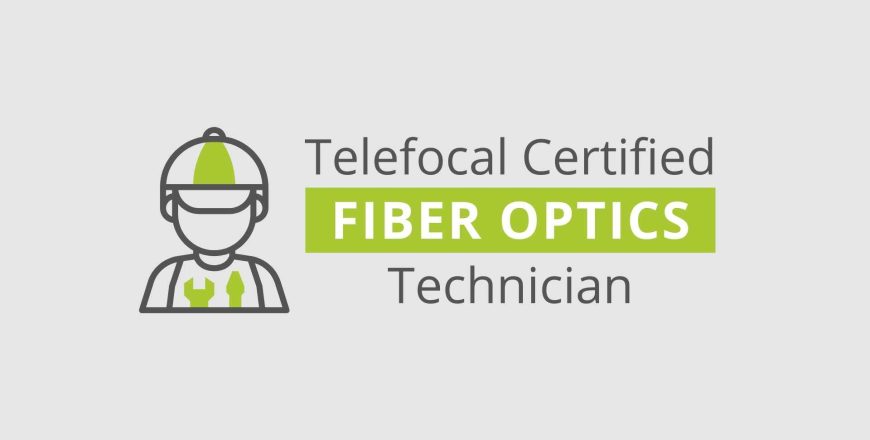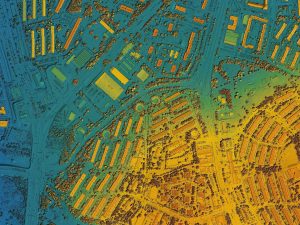Telefocal Certified Fiber Optics Technician (TC-FOT)

Course Overview
This 5-day certification course provides participants with a comprehensive understanding of optical fiber fundamentals, optical networks and technologies, and outside plant network architecture. The course covers key principles of fiber optics systems, transmission, and testing, ensuring a solid theoretical foundation.
Participants will gain hands-on experience working with optical fiber cables through practical lab sessions, utilizing essential optical test instruments such as OTDRs and fusion splicers. These hands-on exercises bridge classroom learning with real-world applications, enhancing technical proficiency.
At the end of the course, participants will take a certification exam to validate their knowledge of fiber optics theories, system design, transmission principles, and testing methodologies. This certification confirms their expertise in fiber optics communications, equipping them for roles in network deployment, maintenance, and troubleshooting.
The certification exam will cover key domains listed as follows:
- Deploying optical fiber network
- FTTX and GPON
- Light theory and optical transmission
- Optical fiber network and systems
- Optical fiber, cables and hardware
- Telecom network and transmission
- Tools and testing
Target Audience
- Vendors, Network operators and Consultants
- Telecommunications technicians and contractors who wish to be deployed on Next Generation Access Networks
- Fiber optics core technicians and supervisors
- Cable splicers and other telecommunications professionals or contractors who are employed in the build, installation, repair and troubleshooting of optical transport
Duration & Training Format
Instructor-led Training
- Classroom: 5 days
- LIVE Virtual: 35 hours
- A minimum of 8 or more participants is required for a Classroom session to commence.
- A minimum of 6 or more participants is required for a LIVE Virtual session to commence.
- LIVE Virtual courses can be conducted for 5 hours or 7 hours daily. Please note that the number of training days will be extended if you opt for 5 hours daily.
Upcoming Course Dates
26 – 30 Jan 2026 (Mon – Fri), GMT +8
6 – 10 Apr 2026 (Mon – Fri), GMT +8
If you are keen on attending the above scheduled courses, please register your interest via our course enquiry form.
Course Objectives
- Understand the theories, concepts and technologies which underpin fiber optic transport and access networks
- Identify fiber optics Outside Plant (OSP) components and fiber optic cable planning and installation
- Appreciate fiber optic Health and Safety issues, comprehend the key tools and testers associated with fiber optics and be fully competent in their operation
- Acquire a range of practical skills associated with cable splicing, build and installation, testing, repair and trouble-shooting of fiber optic transport networks
Course Outline
- Optical Fiber Fundamentals
- Transmission Media – Copper, Optical Fiber, Wireless
- Twister Pair Copper Cables: STP, FTP
- Connectors for Copper Cables: RJ-45 and BNC
- Construction of Optical Fiber
- Light Propagation
- Multimode Vs Singlemode
- ITU Standards for Optical Fiber
- Fiber Characteristics as per G.652 and other standards
- Optical Fiber Limitations like Attenuation, Dispersion, OSNR, Non-Linear Effects
- Migrating Away from Legacy Technologies: xDSL on Twister Pair to PON over Fiber
- Active Ethernet vs Passive Optical Network
- Connectors for Optical Fibers: ST, FC, SC, LC, etc.
- SFP and its Variants
- Case Studies: Usage of various Media Types in Modern Operators
Practical Exercise: Demonstration of Optical Fiber Cables, Tools and Test Instruments
- Optical Networks and Technologies
- Access Technologies: GPON and its Flavors
- Core Technologies: SDH/SONET, OTN, MPLS-TP and DWDM
- Power and Gain/Loss Units: dB, dBm, dBW
- Transmit/Launch Power
- Receive Power
- Receive Sensitivity
- Optical Power Budget
- Practical Exercises
- SDH Concepts: Frame Structure, Tributaries, Aggregate Signal, Regenerator, Path Terminating Equipment, Add/Drop Multiplexer
Practical Exercise:
Usage of the following tools:
– Optical Laser Source
– Optical Power Meter
– Fiberscope
– Cleaning Kit
– Passive Optical Splitter
- Working with Optical Fiber Cables
- Construction of Optical Fiber Cable
- Color Coding
- Mechanical vs Fusion Spicing
- Simplex and Zipcord
- Color Coding
- Loose Tubes
- Breakout Cables
- Distribution Cables
- Ribbon Cable
- FTTH Architecture: Primary, Distribution and Drop Cables
- Optical Test Instruments
- Optical Test Set
- Optical Laser Source
- Optical Power Meter
- Using Fusion Splicing Machine
- Fiberscope
- Clever
- Stripper
- Fiber Cleaning Kit
- Practical Exercises
- OTDR (Optical Time-Domain Reflectometer)
- Usage and Applications
- Reading Results
- Taking Measurements
- Interpreting Results
- Built-in Secondary Tools
- Fine Tuning Configuration Settings
- Long Pulse Vs Short Pulse
Practical Exercise:
Usage of the following tools:
– OTDR
– VFL (Visual Fault Locator)
– Cable Jacket Remover
– Stripper
– Cleaver
– Fusion Splicing Machine
- OSP Deployment
- Route Selection
- ROW Approval
- Installation Methods
- Direct Buried
- Ducted Cable
- Aerial Installation
- Submarine Cable
- Drop Cable
- Horizontal Directional Drilling (HDD)
- Microducts
- Cabinet Placement
- Splitters and Junction Boxes
- Indoor Wiring
- ONT Placement
- Optical Fiber Planning via GIS Software
- Overview of QGIS
- Adding the Required Plugins
- Creating a New Project
- Getting a Map
- Working with Layers
- Analysing Existing Examples
Practical Exercise: More Practice on Optical Test Instruments and Tools
- Advanced Planning via GIS Software Tool
- Selecting a Sample Area for FTTH Deployment
- Design Parameters: Number of Subscribers, Split Ratio, Desired Data Rate, Technology Selection, Splitter Cascading Methodology
- Drawing Fiber Network on Paper
- Drawing Fiber Network on QGIS Software Tool
- Adding OLT
- Adding Primary Cable
- Adding Fiber Distribution Hub
- Adding Distribution Cable
- Adding Network Access Points
- Adding Drop Cables for Connecting with ONTs
Practical Exercise: Fiber Planning using QGIS
Certification: At the end of the course, participants will sit through both written and practical examinations. A professional certificate will only be issued upon:
- Scoring 60% or higher on the written exam AND
- Scoring 80% or higher on the practical assessment AND
- Achieving at least 75% attendance for the course.
Exam Details
The TC-FOT exam consists of both theory and practical components.
Theory
- Format: 80 MCQs
- Duration: 2 hours
- Passing Score: 60%
Practical
- Format: Candidates will be provided with a detailed worksheet outlining tasks designed to test their proficiency in core fiber optics skills
- Passing Score: 60%
List of Practical Skills Tested:
- Use of a Visual Fault Locator, Continuity Tester, Optical Source and Optical Power Meter
- Fusion splicing and preparation of fiber for splicing
- Optical power measurement and OPM calibration
- Insertion loss calculation
- Use of OTDR for parameter setting, testing, getting trace, analyzing trace and troubleshooting
List of Optical Tools and Accessories used in the Hands-on Labs:
- Fusion Splicer
- Optical Time Domain Reflectometer (OTDR)
- Optical power sources
- Optical power meters
- Optical Test Sets
- Visual Fault Locator
- Optical cables
- Different connectors
- Patch cords and Pigtail
Pre-requisites
Prior experience of working with fiber optics cables and systems.



